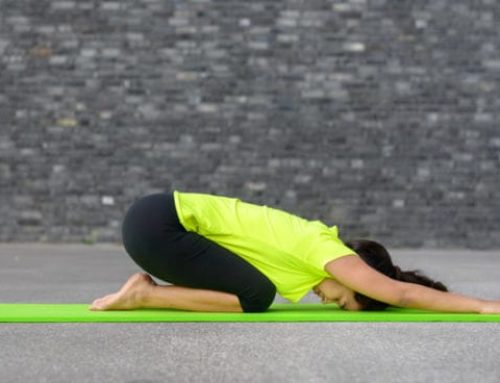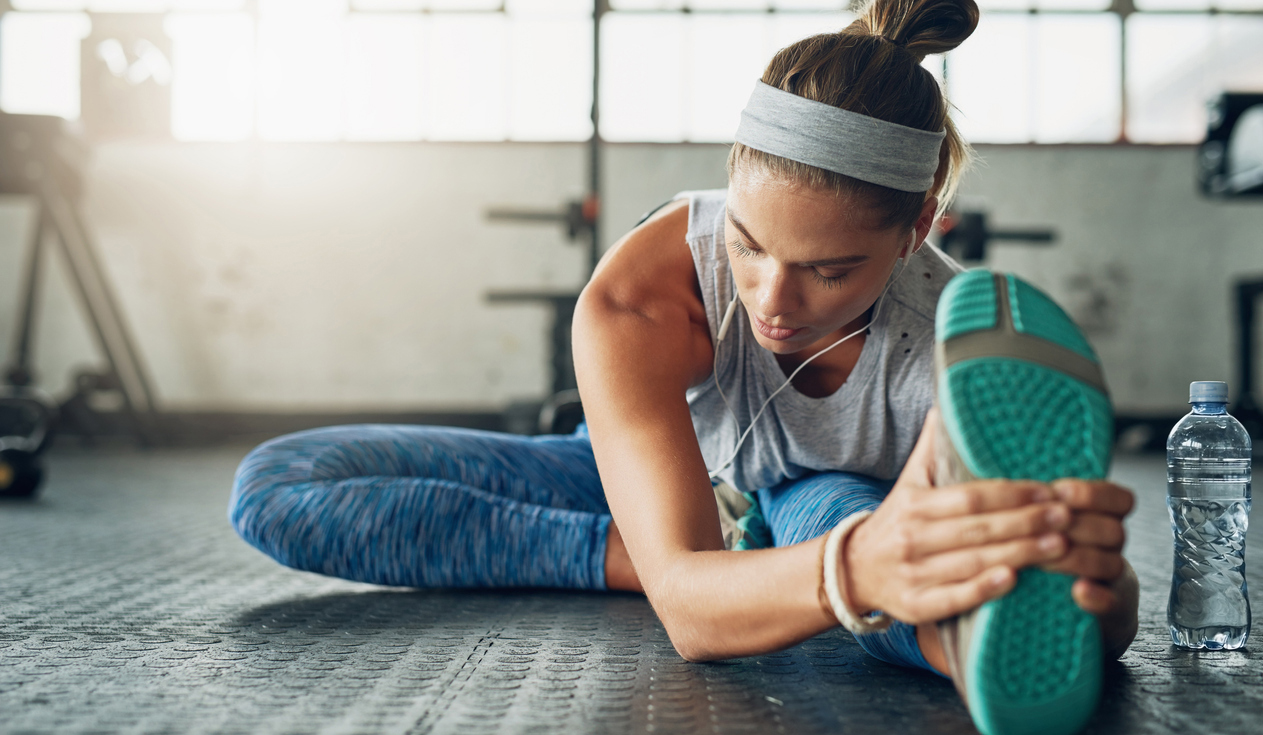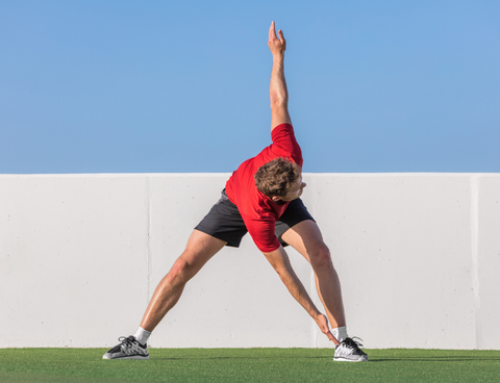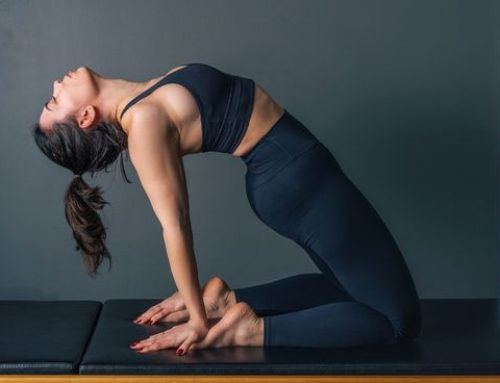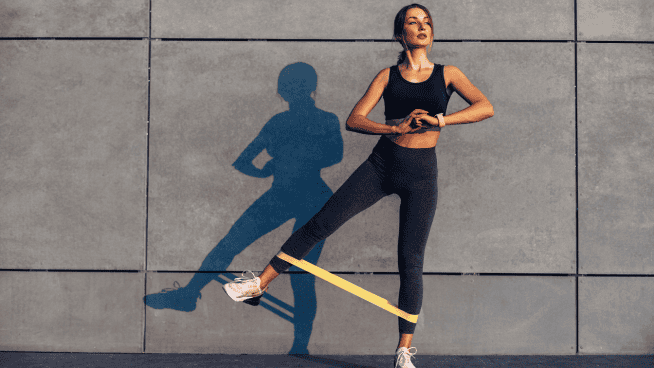Why Your Ankle Mobility Sucks (And Why You Should Fix it ASAP)
Every Joint in the human body has a combination of mobility and stability.
To some extent, the more mobile a joint, the less stable that joint is, and the more stable the joint, the less mobile. Each of the major joints has either a greater need for mobility or stability for the body to function optimally, and this is referred to as the joint-by-joint approach. The ankle joint, in particular, needs to be mobile. The ankle is the base of the body during any upright athletic activities, so if it is not functioning properly, it will have negative implications all the way up the kinetic chain. In this article, I will attempt to show why many individuals lack mobility of their ankles, specific reasons athletes need ankle mobility, and a couple of simple exercises to help you increase your ankle mobility.
Why Your Ankle Mobility Sucks
The average individual does not take their ankles to end ranges during daily activities. As with any trainable attribute, if you do not use it, you lose it. Therefore, It would make sense that the average individual lacks ankle mobility. Athletes certainly take their ankles near the end range of dorsiflexion (the movement of the foot closer to the shin) more often, but there are plenty of reasons why they can lack ankle mobility as well.
One issue I see in many of my athletes is focusing on ankle stability at the expense of mobility. Many athletes, specifically basketball and volleyball players, wear ankle braces throughout competition due to the increased risk of ankle sprains in those sports. Ankle braces can be a simple way to reduce the risk of ankle sprains by providing added support to the ankle. The problem is that ankle braces also limit the ability of the ankle to move, which as I will talk about later on, can cause issues further up the kinetic chain. I have had countless ankle sprains, so I understand the fear to play sports without a brace. It’s always a case-by-case basis, but I believe many athletes could benefit from reducing how frequently they use ankle braces. Limit it to games and intense practices where the risk is greater, while using the exercises we’ll hit on later in this article to increase ankle mobility.
Another common cause is performing resistance exercises that allow athletes to compensate for limited ankle mobility. The Squat is a great example of this. Bar position dictates how much motion is needed at the ankle. The need for ankle mobility is least in the low bar back Squat, and greatest in the Overhead Squat. The Back Squat is one of the more prevalent exercises used by athletes, but it can be detrimental to ankle mobility.
The high bar Back Squat, which is performed by the majority of athletes, does require a decent amount of ankle mobility to be performed properly. The issue arises when athletes are cued to keep their knees behind their toes when they squat. This is a generic cue that makes shoe size play a larger role in exercise technique than biomechanics and sport specificity. The only way to keep your knees behind your toes is to decrease squat depth and significantly increase the forward lean of the torso, which increases the load to the lumbar spine and eliminates ankle range of motion. Whatever is performed with load is going to be engrained into your movement patterns. If you teach your ankles not to move under load, then your ankles will be immobile.
Flexibility and posture issues can also play a big role in a lack of ankle.
Why Does Ankle Mobility Matter?
The first issue with limited ankle mobility is that it can reduce power output during athletic activities.
The ankle works like a spring to propel the body forward during athletic activities. Anyone who is familiar with a spring understands that the more you coil the spring, the greater the force when you let that spring go. It is the same concept with the ankle. If the ankle can move into a greater range (coil up via the foot coming toward the shin) then it has greater force when it springs back. If the ankle is unable to move into a sufficient range, then kinetic energy is lost, and power output decreases. For athletic competition where a tenth of a second can be the difference between winning and losing you never want to have lost power. Greater dorsiflexion also results in decreased ground contact time, another crucial component of speed.
“Coaches often say that you need to run on your toes, but that’s probably one of the biggest lies that’s ever been told,” Gary Cablayan, the speed coach who helped John Ross set the NFL Combine 40-Yard Dash record, once told STACK. “You want to have the calf really flexed so it can push and respond to the ground.”
The second issue goes back to the joint-by-joint approach. Each joint has a greater need for either mobility or stability. What happens when an athlete is lacking in ankle mobility, but is forced to perform athletic movements that require the ankles to be mobile? The answer is that the body will have to move at a different joint, i.e., the knee.
The knee is a hinge joint which means it can only flex and extend. Any other motion occurring at the knee is going to put strain on the ligaments that help to stabilize the joint. The knee joint requires significantly more stability than mobility, but remember if you increase mobility of a joint, that reduces the joint’s stability. This is the biggest issue with lacking movement at the ankle. If the ankle cannot move, the knee will move inwards, which is known as valgus. Valgus movement at the knee puts strain on the MCL (medial collateral ligament) and ACL (Anterior Cruciate Ligament).
Ligaments should be the last line of defense for the knee joint, but many athletes are putting stress on them every time they run or jump. Repeated low level stresses to those ligaments will eventually wear them down to the point where a minor hit causes the ligaments to tear or a non contact injury will occur. The ankle is the first joint to absorb the force from the ground. How well the ankle moves will dictate how that force is transferred up to the rest of your body.
How Do I Improve My Ankle Mobility?
I follow a four-step mobility protocol with my athletes:
- Soft Tissue Work
- Stretching
- Dynamic Movement
- Loading the New Range
Each of these phases affects the muscles differently and is an important component to gaining better mobility. Fascia is a body membrane that covers the muscle, and soft tissue work is used to remove trigger points that are found in fascia. For soft tissue work at the ankle, I recommend starting out with a lacrosse ball over your calves and plantar fascia. Whatever technique you are using, it is crucial to feel a change in the tissue before you move on to the next step.
After soft tissue work, simply stretching your calves will be the next step. The key with the calf is to perform a standard calf stretch on each leg with your knee extended and flexed. The calf is made up of two major muscles; the Gastrocnemius and the Soleus. When the knee is extended, you are primarily stretching the gastroc, and when the knee is flexed, the primary muscle stretched is the soleus.
It is crucial not to neglect the soleus, because it plays a major role in ankle mobility since the knee is very rarely locked out during closed chain (foot on the ground) activities when ankle mobility is needed. For the calf stretch, you place the ball of your foot on the wall while your heel is on the ground. Lean your torso forward until you feel the stretch in your calf. One you’ve completed that set, hit that same position but with knee bend. Each stretch should be held for 90 second to 2 minutes in order to truly create change.
The third step is dynamic movements. This phase is important because it allows you to take actively take the muscles to end range. I have three ankle mobility dynamic movements I frequently use with my athletes. The first is open chain (foot off the ground) and the other two are closed chain (foot on the ground).
The open chain exercise is known as Ankle CARS. CARS are Controlled Articular Rotations. CARS can be done with any major joint in the body. For the ankle, the individual holds their Tibia (shin) to ensure the movement is occurring at the ankle only and begins to make as big of a circle as they can at the ankle. The athlete should do these clockwise and counter clockwise for a specific number of reps (3-8). The key word in CARS is Controlled. The athlete needs to perform these slowly and attempt to make a larger circle every repetition.
https://youtu.beBDNGAnp7u7s
The second exercise is often referred to as the Knee to Wall Test, or Knee to Wall Touches. It is the standard exercise my athletes use to warm up and train ankle mobility. In this exercise, the athlete should be near a wall and assume a lunge position. The athlete can start with their front foot touching the wall. The athlete then brings their knee forward, keeping their heel on the ground, until the knee touches the wall. If it reaches the wall, the athlete moves their foot a little bit further back from the wall. This repeats until they find a point that they can just barely reach the wall with their knee while keeping their heel down. When the athlete finds that point, they will start to perform the assigned reps (two sets of 15 reps on both sides, with every time the knee hits the wall being one rep).
https://youtu.beKxi_EKd9LzE
The third exercise is more advanced version where a band is used to provide a posterior distraction of the Tibia. On occasions, mobility can be limited by the bones of the joint compressing into each other and reducing the space in the joint. Athletes will often feel a blockage or like the movement just stops abruptly when this is the case, but it does not feel the same as muscular tightness. This is where utilizing distraction to increase the joint space can be advantageous. In this exercise, the athlete attaches a band to a squat rack or a pole and places the band on the front portion of the ankle. The athlete steps forward to create tension in the band pulling the tibia backwards. The athlete performs the reps the same way they did in the first ankle mobility exercise, but now the band increases space in the joint, allowing increased movement at the ankle.
At this point, you have done a lot of work to increase the movement at the ankle joint. Now it is important to train that new range under load to help engrain the movement pattern. There are a number of squat variations that can load up that range depending on the experience and skill of the athlete.
The Front Squat, Overhead Squat, Bulgarian Split Squat and Pistol Squat are more advanced exercises that can load up end ranges of ankle mobility. For younger or less advanced athletes, simpler variations like the Split Squat and Goblet Squat are the best ways to do this.
The Split Squat looks like a Lunge, but instead of stepping forward or backward, the athlete gets into the split position and descends and ascends without taking their feet off the ground.
The goblet squat is optimally performed with a dumbbell because it gives the athlete a cue. Both portions of the dumbbell need to remain in contact with the torso of the athlete or else they are bending too much at the hips or back (which eliminates some of the need for ankle dorsiflexion from the movement). It is important that you keep these exercises relatively light, using no heavier than 50% of your max. If the weight is too heavy, then you will revert back to your previous compensations.
That was a lot of information, but here is a sample workout to increase your ankle mobility.
- Soft Tissue at the calf with lacrosse ball, 2 minutes per side
- Ankle CARS, 2×5/side
- Gastroc Stretch, 2 mins/side
- Soleus Stretch, 2 mins/side
- Ankle Mobility, 2×15/side
- Squat Variation with Light Weight, 2×10
- Split Squat Variation with Light Weight, 2×10
Photo Credit: santypan/iStock
READ MORE:
RECOMMENDED FOR YOU
MOST POPULAR
Why Your Ankle Mobility Sucks (And Why You Should Fix it ASAP)
Every Joint in the human body has a combination of mobility and stability.
To some extent, the more mobile a joint, the less stable that joint is, and the more stable the joint, the less mobile. Each of the major joints has either a greater need for mobility or stability for the body to function optimally, and this is referred to as the joint-by-joint approach. The ankle joint, in particular, needs to be mobile. The ankle is the base of the body during any upright athletic activities, so if it is not functioning properly, it will have negative implications all the way up the kinetic chain. In this article, I will attempt to show why many individuals lack mobility of their ankles, specific reasons athletes need ankle mobility, and a couple of simple exercises to help you increase your ankle mobility.
Why Your Ankle Mobility Sucks
The average individual does not take their ankles to end ranges during daily activities. As with any trainable attribute, if you do not use it, you lose it. Therefore, It would make sense that the average individual lacks ankle mobility. Athletes certainly take their ankles near the end range of dorsiflexion (the movement of the foot closer to the shin) more often, but there are plenty of reasons why they can lack ankle mobility as well.
One issue I see in many of my athletes is focusing on ankle stability at the expense of mobility. Many athletes, specifically basketball and volleyball players, wear ankle braces throughout competition due to the increased risk of ankle sprains in those sports. Ankle braces can be a simple way to reduce the risk of ankle sprains by providing added support to the ankle. The problem is that ankle braces also limit the ability of the ankle to move, which as I will talk about later on, can cause issues further up the kinetic chain. I have had countless ankle sprains, so I understand the fear to play sports without a brace. It’s always a case-by-case basis, but I believe many athletes could benefit from reducing how frequently they use ankle braces. Limit it to games and intense practices where the risk is greater, while using the exercises we’ll hit on later in this article to increase ankle mobility.
Another common cause is performing resistance exercises that allow athletes to compensate for limited ankle mobility. The Squat is a great example of this. Bar position dictates how much motion is needed at the ankle. The need for ankle mobility is least in the low bar back Squat, and greatest in the Overhead Squat. The Back Squat is one of the more prevalent exercises used by athletes, but it can be detrimental to ankle mobility.
The high bar Back Squat, which is performed by the majority of athletes, does require a decent amount of ankle mobility to be performed properly. The issue arises when athletes are cued to keep their knees behind their toes when they squat. This is a generic cue that makes shoe size play a larger role in exercise technique than biomechanics and sport specificity. The only way to keep your knees behind your toes is to decrease squat depth and significantly increase the forward lean of the torso, which increases the load to the lumbar spine and eliminates ankle range of motion. Whatever is performed with load is going to be engrained into your movement patterns. If you teach your ankles not to move under load, then your ankles will be immobile.
Flexibility and posture issues can also play a big role in a lack of ankle.
Why Does Ankle Mobility Matter?
The first issue with limited ankle mobility is that it can reduce power output during athletic activities.
The ankle works like a spring to propel the body forward during athletic activities. Anyone who is familiar with a spring understands that the more you coil the spring, the greater the force when you let that spring go. It is the same concept with the ankle. If the ankle can move into a greater range (coil up via the foot coming toward the shin) then it has greater force when it springs back. If the ankle is unable to move into a sufficient range, then kinetic energy is lost, and power output decreases. For athletic competition where a tenth of a second can be the difference between winning and losing you never want to have lost power. Greater dorsiflexion also results in decreased ground contact time, another crucial component of speed.
“Coaches often say that you need to run on your toes, but that’s probably one of the biggest lies that’s ever been told,” Gary Cablayan, the speed coach who helped John Ross set the NFL Combine 40-Yard Dash record, once told STACK. “You want to have the calf really flexed so it can push and respond to the ground.”
The second issue goes back to the joint-by-joint approach. Each joint has a greater need for either mobility or stability. What happens when an athlete is lacking in ankle mobility, but is forced to perform athletic movements that require the ankles to be mobile? The answer is that the body will have to move at a different joint, i.e., the knee.
The knee is a hinge joint which means it can only flex and extend. Any other motion occurring at the knee is going to put strain on the ligaments that help to stabilize the joint. The knee joint requires significantly more stability than mobility, but remember if you increase mobility of a joint, that reduces the joint’s stability. This is the biggest issue with lacking movement at the ankle. If the ankle cannot move, the knee will move inwards, which is known as valgus. Valgus movement at the knee puts strain on the MCL (medial collateral ligament) and ACL (Anterior Cruciate Ligament).
Ligaments should be the last line of defense for the knee joint, but many athletes are putting stress on them every time they run or jump. Repeated low level stresses to those ligaments will eventually wear them down to the point where a minor hit causes the ligaments to tear or a non contact injury will occur. The ankle is the first joint to absorb the force from the ground. How well the ankle moves will dictate how that force is transferred up to the rest of your body.
How Do I Improve My Ankle Mobility?
I follow a four-step mobility protocol with my athletes:
- Soft Tissue Work
- Stretching
- Dynamic Movement
- Loading the New Range
Each of these phases affects the muscles differently and is an important component to gaining better mobility. Fascia is a body membrane that covers the muscle, and soft tissue work is used to remove trigger points that are found in fascia. For soft tissue work at the ankle, I recommend starting out with a lacrosse ball over your calves and plantar fascia. Whatever technique you are using, it is crucial to feel a change in the tissue before you move on to the next step.
After soft tissue work, simply stretching your calves will be the next step. The key with the calf is to perform a standard calf stretch on each leg with your knee extended and flexed. The calf is made up of two major muscles; the Gastrocnemius and the Soleus. When the knee is extended, you are primarily stretching the gastroc, and when the knee is flexed, the primary muscle stretched is the soleus.
It is crucial not to neglect the soleus, because it plays a major role in ankle mobility since the knee is very rarely locked out during closed chain (foot on the ground) activities when ankle mobility is needed. For the calf stretch, you place the ball of your foot on the wall while your heel is on the ground. Lean your torso forward until you feel the stretch in your calf. One you’ve completed that set, hit that same position but with knee bend. Each stretch should be held for 90 second to 2 minutes in order to truly create change.
The third step is dynamic movements. This phase is important because it allows you to take actively take the muscles to end range. I have three ankle mobility dynamic movements I frequently use with my athletes. The first is open chain (foot off the ground) and the other two are closed chain (foot on the ground).
The open chain exercise is known as Ankle CARS. CARS are Controlled Articular Rotations. CARS can be done with any major joint in the body. For the ankle, the individual holds their Tibia (shin) to ensure the movement is occurring at the ankle only and begins to make as big of a circle as they can at the ankle. The athlete should do these clockwise and counter clockwise for a specific number of reps (3-8). The key word in CARS is Controlled. The athlete needs to perform these slowly and attempt to make a larger circle every repetition.
https://youtu.beBDNGAnp7u7s
The second exercise is often referred to as the Knee to Wall Test, or Knee to Wall Touches. It is the standard exercise my athletes use to warm up and train ankle mobility. In this exercise, the athlete should be near a wall and assume a lunge position. The athlete can start with their front foot touching the wall. The athlete then brings their knee forward, keeping their heel on the ground, until the knee touches the wall. If it reaches the wall, the athlete moves their foot a little bit further back from the wall. This repeats until they find a point that they can just barely reach the wall with their knee while keeping their heel down. When the athlete finds that point, they will start to perform the assigned reps (two sets of 15 reps on both sides, with every time the knee hits the wall being one rep).
https://youtu.beKxi_EKd9LzE
The third exercise is more advanced version where a band is used to provide a posterior distraction of the Tibia. On occasions, mobility can be limited by the bones of the joint compressing into each other and reducing the space in the joint. Athletes will often feel a blockage or like the movement just stops abruptly when this is the case, but it does not feel the same as muscular tightness. This is where utilizing distraction to increase the joint space can be advantageous. In this exercise, the athlete attaches a band to a squat rack or a pole and places the band on the front portion of the ankle. The athlete steps forward to create tension in the band pulling the tibia backwards. The athlete performs the reps the same way they did in the first ankle mobility exercise, but now the band increases space in the joint, allowing increased movement at the ankle.
At this point, you have done a lot of work to increase the movement at the ankle joint. Now it is important to train that new range under load to help engrain the movement pattern. There are a number of squat variations that can load up that range depending on the experience and skill of the athlete.
The Front Squat, Overhead Squat, Bulgarian Split Squat and Pistol Squat are more advanced exercises that can load up end ranges of ankle mobility. For younger or less advanced athletes, simpler variations like the Split Squat and Goblet Squat are the best ways to do this.
The Split Squat looks like a Lunge, but instead of stepping forward or backward, the athlete gets into the split position and descends and ascends without taking their feet off the ground.
The goblet squat is optimally performed with a dumbbell because it gives the athlete a cue. Both portions of the dumbbell need to remain in contact with the torso of the athlete or else they are bending too much at the hips or back (which eliminates some of the need for ankle dorsiflexion from the movement). It is important that you keep these exercises relatively light, using no heavier than 50% of your max. If the weight is too heavy, then you will revert back to your previous compensations.
That was a lot of information, but here is a sample workout to increase your ankle mobility.
- Soft Tissue at the calf with lacrosse ball, 2 minutes per side
- Ankle CARS, 2×5/side
- Gastroc Stretch, 2 mins/side
- Soleus Stretch, 2 mins/side
- Ankle Mobility, 2×15/side
- Squat Variation with Light Weight, 2×10
- Split Squat Variation with Light Weight, 2×10
Photo Credit: santypan/iStock
READ MORE:

